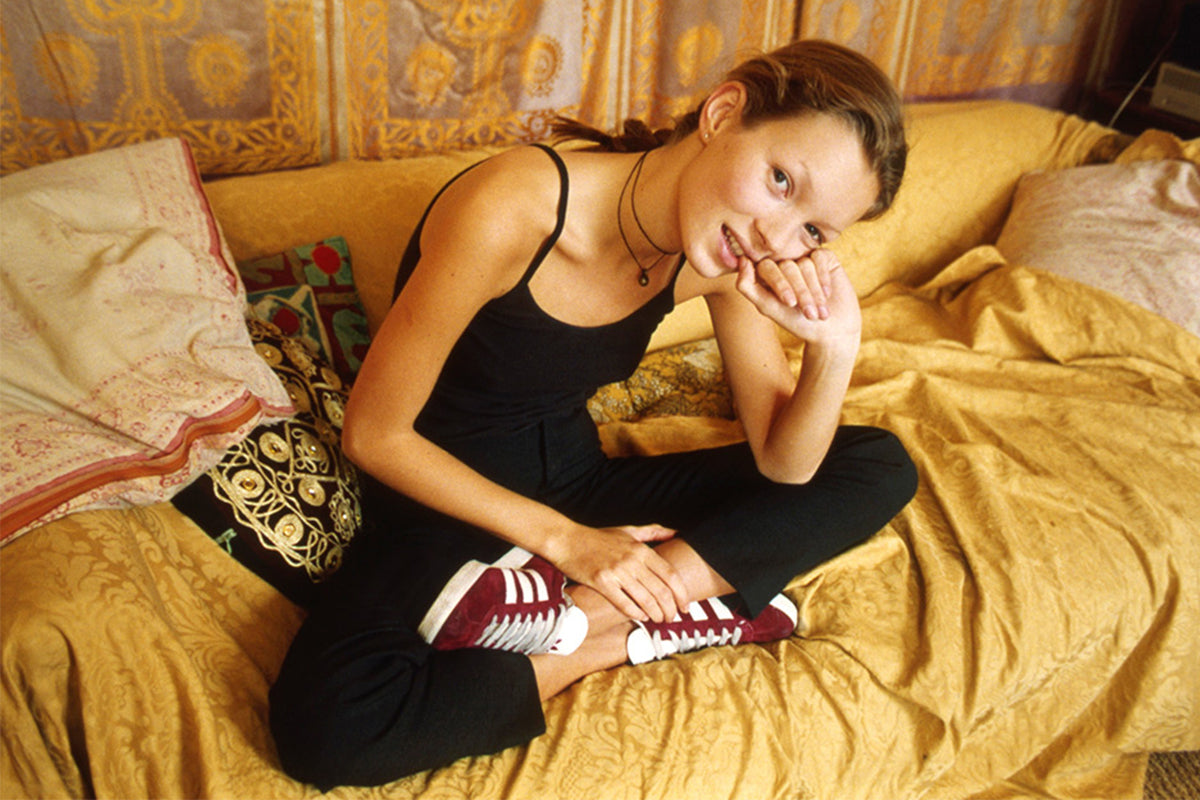
The adidas Originals Gazelle, a training shoe that became definitive of British style
Nothing spells classic like timeless longevity, and when a sneaker introduced in the 1960’s still finds relevance today… it’s a feat. That’s exactly what we have with the adidas Originals Gazelle sneaker. Not only has it stood the test of time, but its simple, clean and minimal design has made its mark as a training shoe and as a cultural mainstay with serious fashion cred.
First released in 1966, the shoe was originally intended for training and has roots on both the track and soccer field. At the time, all training shoes were made out of leather, and the adidas Originals Gazelle has the honour of being the first training shoe on the Three Stripes’ roster constructed from suede. Suede provided a similar level of protection, and was much lighter than leather.

The original Gazelles were available in red and blue versions, both with white stripes. However, the colour ways weren’t just for aesthetic purposes. The red iteration featured a transparent non-slip outsole, while the blue version sported a microcell ripple sole. Both offered different levels of traction, with the former intended for outdoor wear (with handball players in mind) and the latter suited for indoors. A few years later and after a few small design changes, the Gazelles began touting the same outsoles, but maintained its two OG colour ways.
Come the 1970’s, and the Gazelles were floating in and out of consciousness but definitely inspired some of the shoe designs of that decade (think, the Athens and the Jaguar). By the 1980’s, the Gazelles were slowly, but surely, solidifying its reputation as a must-have shoe, especially in the UK.
Brits already loved adidas, and the Gazelles were a relatively affordable, easy to get style. At the same time, hip-hop music and rap began to boom in the UK, off the heels of hip-hop scene across the pond. While stateside rappers at the time were more likely to rock Superstars or the Campus, due to basketball’s relative obscurity in the UK, those styles were difficult to get. But the Gazelles were close in look, and already pretty popular. Not only was it a staple for the burgeoning hip-hop scene in the UK at the time, it was also a part of the uniform for the “terracewear,” “casual” types - soccer fanatics. Making do with what was available, Gazelles became the de facto footwear of choice for an entire generation of Brits.

By the 1990’s, Britpop’s heyday made sure the Gazelles were here to stay. The shoes were seen on everyone - from bands Oasis and Blur, to even Kate Moss and Helena Christensen. While the shoes remained out of the mainstream in the US, Britain was all about it and the shoes are a cultural icon to this day.
Fast-forward to 2016, adidas reissued the Gazelle with its undeniable ‘90s influence in mind. Completely reengineered, the new Gazelles are updated, but are basically identical to its OG predecessors (with the same textures, ribbing, all the way down to the stitches). Aesthetically, the Gazelles scream vintage, but fashion has proven to be cyclical. So, the shoes have once again found popularity with a whole new generation of sneaker aficionados.

Words / Helena Yeung

